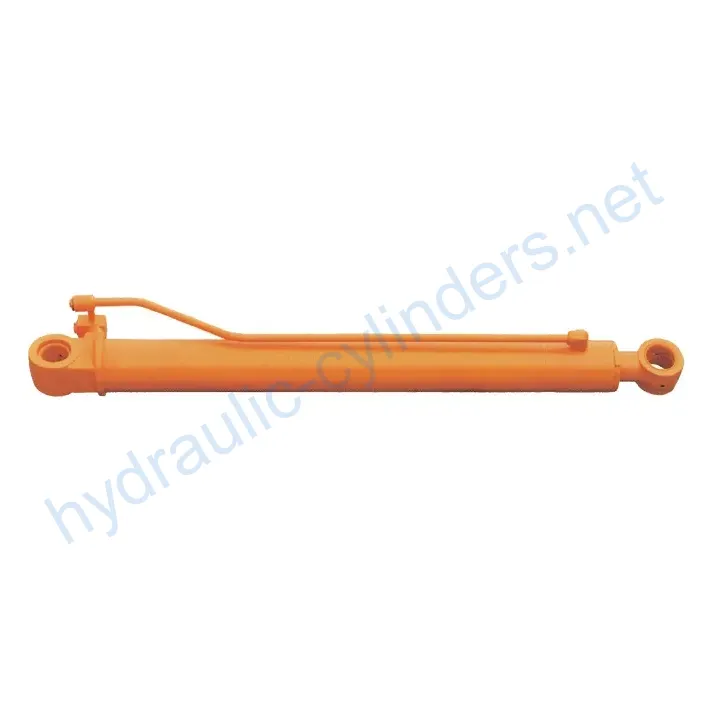Arm Cylinder For SDLG Large Excavator LG6460E
Yhtenä hydraulisylinterien valmistajista, toimittajista ja mekaanisten tuotteiden viejistä tarjoamme hydraulisylintereitä ja monia muita tuotteita.
Ota yhteyttä meihin saadaksesi lisätietoja.
Posti:sales@hydraulic-cylinders.net
Valmistaja toimittaja viejä hydraulisylinterit.
Arm Cylinder For SDLG Large Excavator LG6460E
Introduction
The arm cylinder is a specially designed hydraulic cylinder that provides linear motion and power to the arm of various machinery, such as excavators, cranes, and robotic arms. It plays a crucial role in hydraulic systems, allowing for efficient movement and control of additional tools or attachments. These cylinders not only provide smooth motion but also withstand heavy loads, ensuring efficient operation and reliability of the machinery under various working conditions.

Features
- High-Efficiency Transmission: The arm cylinder provides powerful linear motion and force, ensuring high-performance efficiency in various operations.
- Precise Control: Through the hydraulic system, the arm cylinder enables precise motion control, making the operation of attached tools more flexible and accurate.
- Durability: Arm cylinders are typically made of high-strength materials, offering excellent wear and corrosion resistance, making them suitable for long-term use in harsh environments.
- Multi-functional Adaptability: These cylinders can be widely used in various machinery equipment such as excavators, cranes, and robotic arms, adapting to different working requirements.
- Easy Maintenance: Designed for easy maintenance and replacement, the arm cylinders facilitate regular inspection and upkeep, reducing equipment downtime.

Applications
- Construction Engineering: In excavators and cranes, arm cylinders control the movement of buckets or booms, enabling earthwork operations, material handling, and structural installation.
- Manufacturing Industry: In automated production lines, arm cylinders facilitate the motion of robotic arms for processes such as assembly, welding, and material handling, improving production efficiency and precision.
- Agricultural Machinery: In agricultural equipment like harvesters and seeders, arm cylinders control the movement of operating arms, executing tasks such as seeding, fertilizing, and harvesting.
- Mining: In mining equipment, arm cylinders control the arm movement of mining machinery for ore extraction and transportation.
- Logistics and Transportation: In forklifts and handling robots, arm cylinders control the lifting and movement of forks, enabling material handling and stacking.
Design Considerations and Selection Criteria
- Load-Bearing Capacity: Arm cylinders should be designed to withstand the required load capacity.
- Sealing: Various sealing components, such as piston seals and rod seals, should be used, with materials like polyurethane and nitrile rubber chosen for their durability.
- Durability: The cylinder body and threaded ends should undergo precise treatment to improve wear resistance.
- Safety: Safety features should be incorporated to ensure secure operation.
- Maintainability: Regular lubrication with hydraulic oil and easy access for maintenance and inspection should be considered.

Sealing and Lubrication
The arm cylinder utilizes various sealing components, such as piston seals and rod seals, made of durable materials like polyurethane and nitrile rubber. The cylinder body and threaded ends are finely treated to improve wear resistance. Regular lubrication with the appropriate amount of hydraulic oil is necessary to ensure proper lubrication.
Regular Inspection and Preventive Maintenance
- Inspect the cylinder regularly for any signs of damage or wear.
- Check the sealing components and lubrication levels.
- Verify the proper functioning of safety features.
- Perform preventive maintenance tasks according to the manufacturer’s guidelines.
Installation Guide
Follow these steps for correct installation of the arm cylinder:
- Prepare the mounting area and ensure it is clean and free of debris.
- Align the cylinder with the mounting points and connect the hydraulic hoses.
- Tighten the connections securely using the appropriate tools.
- Check for proper alignment and functioning before operating.

Safety Considerations and Environmental Factors
When using arm cylinders, it is essential to prioritize safety measures to prevent accidents and ensure operator well-being. Adequate safety precautions, such as proper training, following operating guidelines, and using protective equipment, are of utmost importance. Additionally, considering environmental factors such as minimizing fluid leakage and disposing of hydraulic oil properly helps to protect the environment.
Troubleshooting and Common Issues
- Issue: Cylinder fails to extend or retract.
- Solution: Check hydraulic fluid levels, inspect for leaks, and ensure proper hydraulic system functioning.
- Issue: Cylinder operates slowly or unevenly.
- Solution: Verify proper hydraulic pressure, examine seals for damage, and check for obstructions in the cylinder.
- Issue: Cylinder makes unusual noises during operation.
- Solution: Inspect the cylinder for loose fittings, damaged components, or excessive wear.
By following these troubleshooting tips and solutions, readers can effectively diagnose and resolve issues, as well as implement preventive measures to minimize potential problems.

Remember to organize the article logically, use subheadings for easy navigation, incorporate relevant images or charts to enhance understanding, and ensure that the content is clear, concise, and suitable for readers with different levels of technical knowledge.
Author: lyl


Tutustu VR-tehtaaseemme:
Tutustu VR-tehtaaseemme seuraavalla kierroksella
Hydraulisylinteri Sovellus:


